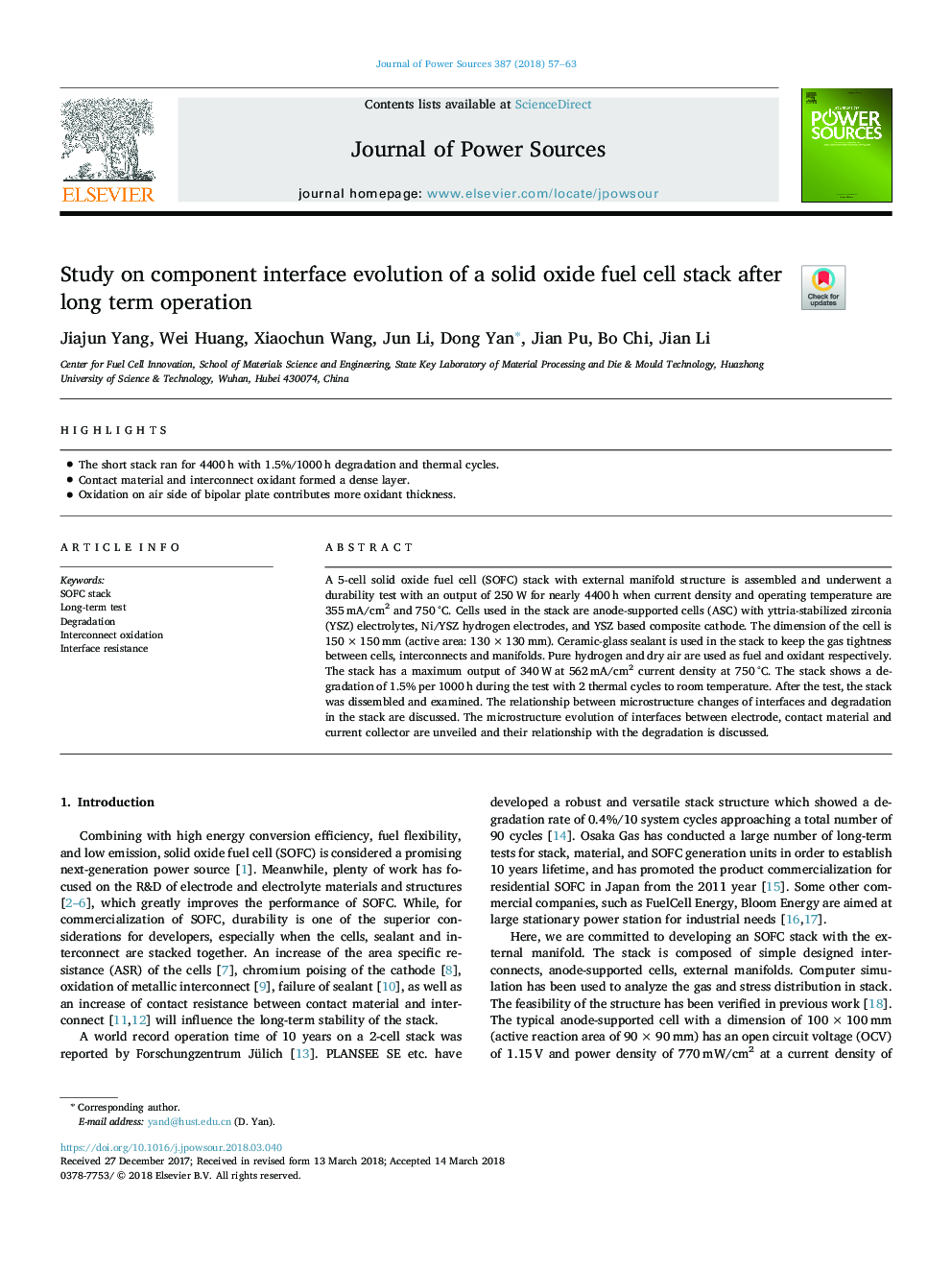| Article ID | Journal | Published Year | Pages | File Type |
|---|---|---|---|---|
| 7725278 | Journal of Power Sources | 2018 | 7 Pages |
Abstract
A 5-cell solid oxide fuel cell (SOFC) stack with external manifold structure is assembled and underwent a durability test with an output of 250â¯W for nearly 4400â¯h when current density and operating temperature are 355â¯mA/cm2 and 750â¯Â°C. Cells used in the stack are anode-supported cells (ASC) with yttria-stabilized zirconia (YSZ) electrolytes, Ni/YSZ hydrogen electrodes, and YSZ based composite cathode. The dimension of the cell is 150â¯Ãâ¯150â¯mm (active area: 130â¯Ãâ¯130â¯mm). Ceramic-glass sealant is used in the stack to keep the gas tightness between cells, interconnects and manifolds. Pure hydrogen and dry air are used as fuel and oxidant respectively. The stack has a maximum output of 340â¯Wâ¯at 562â¯mA/cm2 current density at 750â¯Â°C. The stack shows a degradation of 1.5% per 1000â¯h during the test with 2 thermal cycles to room temperature. After the test, the stack was dissembled and examined. The relationship between microstructure changes of interfaces and degradation in the stack are discussed. The microstructure evolution of interfaces between electrode, contact material and current collector are unveiled and their relationship with the degradation is discussed.
Related Topics
Physical Sciences and Engineering
Chemistry
Electrochemistry
Authors
Jiajun Yang, Wei Huang, Xiaochun Wang, Jun Li, Dong Yan, Jian Pu, Bo Chi, Jian Li,
